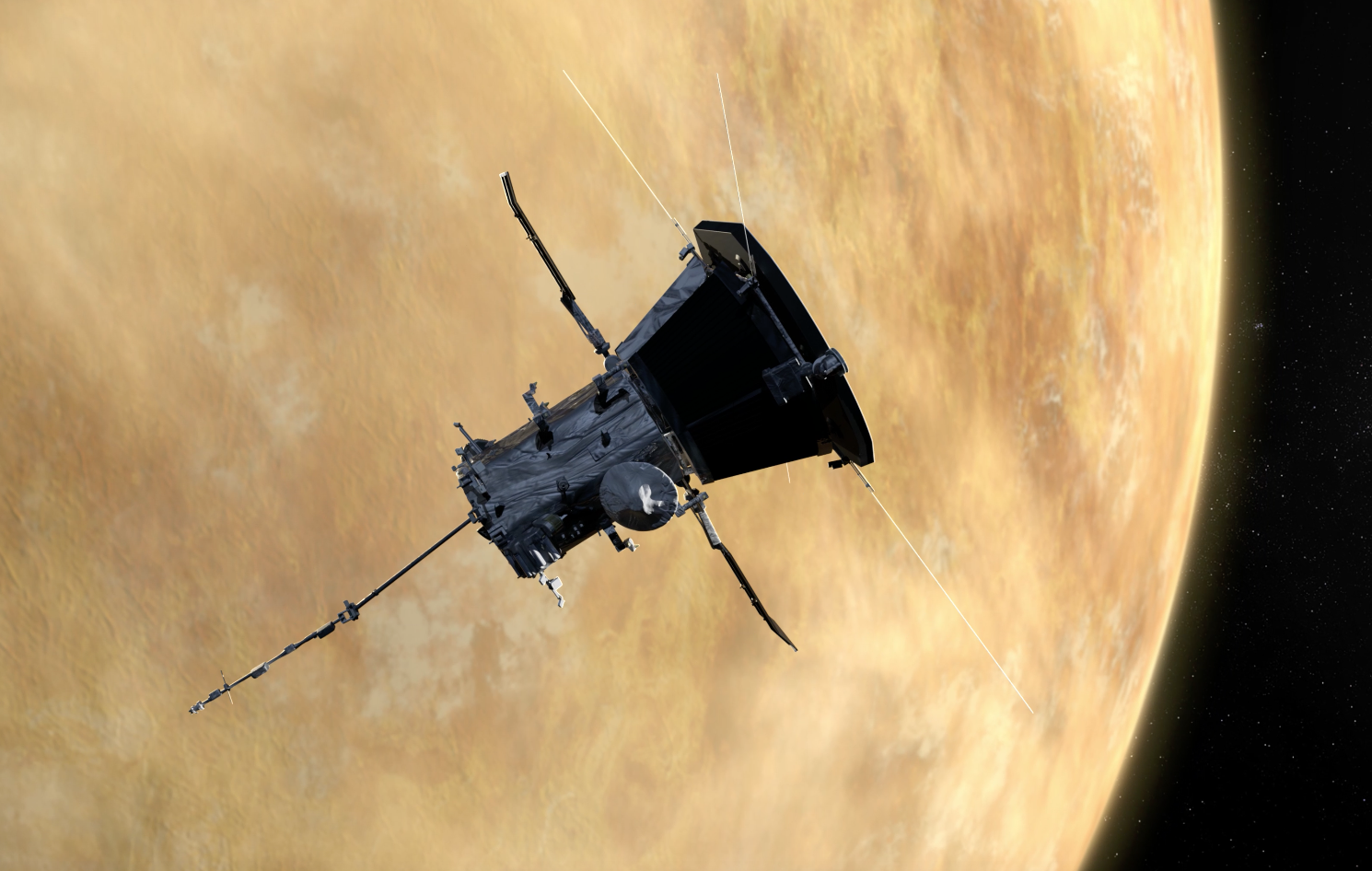'Lightning' on Venus may not be lightning at all, Parker Solar Probe finds
While studying the sun, Parker might have also solved a longstanding Venusian puzzle.

While zipping through space on its seven-year-long mission to investigate the sun, NASA's Parker Solar Probe may have finally picked up signals of the culprit behind Venus' mysterious "lightning" storms. The find happened in 2021, when Parker made a routine flyby of the windy world in an effort to harness the planet's gravitational pull and propel itself closer to its primary stellar subject.
"Parker Solar Probe is a very capable spacecraft. Everywhere it goes, it finds something new," Harriet George, lead author of the new study and a postdoctoral researcher at the Laboratory for Atmospheric and Space Physics, said in a statement.
In a nutshell, per a new paper on the 2021 Parker data, flashes of light on Venus that many experts associate with lightning bolts might not represent lightning bolts at all. Rather, they appear connected to disturbances in the magnetic fields surrounding the planet. Of course, that's not to say Venus doesn't have some lightning — perhaps just not as much as we once thought.
"There's been debate about lightning on Venus for close to 40 years," George said. "Hopefully, with our newly available data, we can help to reconcile that debate."
Essentially, though Venus seems riddled with lightning bolts based on signals scientists have collected over time, something doesn't quite add up. For instance, a 2021 study, the statement says, failed to find the radio waves you'd expect to see from lightning on the planet — and a paper published in August of this year suggests some flashes of light typically attributed to Venusian bolts are actually meteors burning up in the planet's atmosphere.
Related: 'Lightning' on Venus is actually meteors burning up in planet's atmosphere, study says
Listen to the whistler waves
Basically, the way George and fellow researchers drew their conclusions about Venus' lightning — or lack thereof — is by tracing a phenomenon known as "whistler waves."
Breaking space news, the latest updates on rocket launches, skywatching events and more!
Whistler waves are fleeting pulses of energy expressed as electromagnetic waves that can propagate through various mediums; on Earth, for instance, they propagate through part of the atmosphere and generally last about half a second. But most importantly, on Earth, these whistler waves are specifically rooted in lightning discharges.
So, when scientists noticed whistler waves on Venus for the first time in 1978 thanks to the Pioneer Venus spacecraft, it's understandable why they assumed Venus must have lots of lightning. So much, in fact, that many experts believed Venus must experience roughly seven times more lightning than our planet does, according to a statement on the new study.
"Some scientists saw those signatures and said, 'That could be lightning,'" George said. "Others have said, 'Actually, it could be something else.' There’s been back and forth about it for decades since."
After Pioneer's findings, the Galileo spacecraft found further evidence of lightning in 1990, yet Cassini's flybys in 1998 and 1999 failed to find the evidence of radio static on Venus you'd expect to accompany lightning. Then, Venus Express, the first European Venus orbiter, identified some promising proof between 2006 and 2014 that, yes, there is lightning on Earth's "evil twin." It's all very questionable, but the final answer about lightning bolts on Venus could be in sight — especially because Parker's data was collected when the probe was significantly close to the planet. It was only about 1,500 miles (2,414 kilometers) away.
As George explains, whistler waves don't necessarily have to be created by lightning — and when Parker flew by the straw-colored planet a few years ago, it got incredibly close and collected data that indeed suggested Venus' whistler waves do not come from lightning.
The researchers saw those whistler waves heading downward toward the planet, not outward like the direction Earth's lightning-induced whistler waves move to propagate through the atmosphere. "They were heading backward from what everybody had been imagining for the last 40 years," David Malaspina, co-author of the study and an assistant professor at LASP.
From there, the team theorized that the waves stem from disturbances in the planet's magnetic fields. Or, more specifically, the idea is that magnetic field lines surrounding Venus may break apart then snap back together, in turn producing bursts of energy exhibited as none other than whistler waves.
In 2024, Parker will make its seventh and final pass by Venus as it treads closer and closer to the sun. That flyby will bring it less than 250 miles above the Venusian surface.
Hopefully that's enough proximity to settle the planet's lightning debate once and for all.
The paper detailing these findings was published on Sept. 29 in the journal Geophysical Research Letters.

Monisha Ravisetti is Space.com's Astronomy Editor. She covers black holes, star explosions, gravitational waves, exoplanet discoveries and other enigmas hidden across the fabric of space and time. Previously, she was a science writer at CNET, and before that, reported for The Academic Times. Prior to becoming a writer, she was an immunology researcher at Weill Cornell Medical Center in New York. She graduated from New York University in 2018 with a B.A. in philosophy, physics and chemistry. She spends too much time playing online chess. Her favorite planet is Earth.
